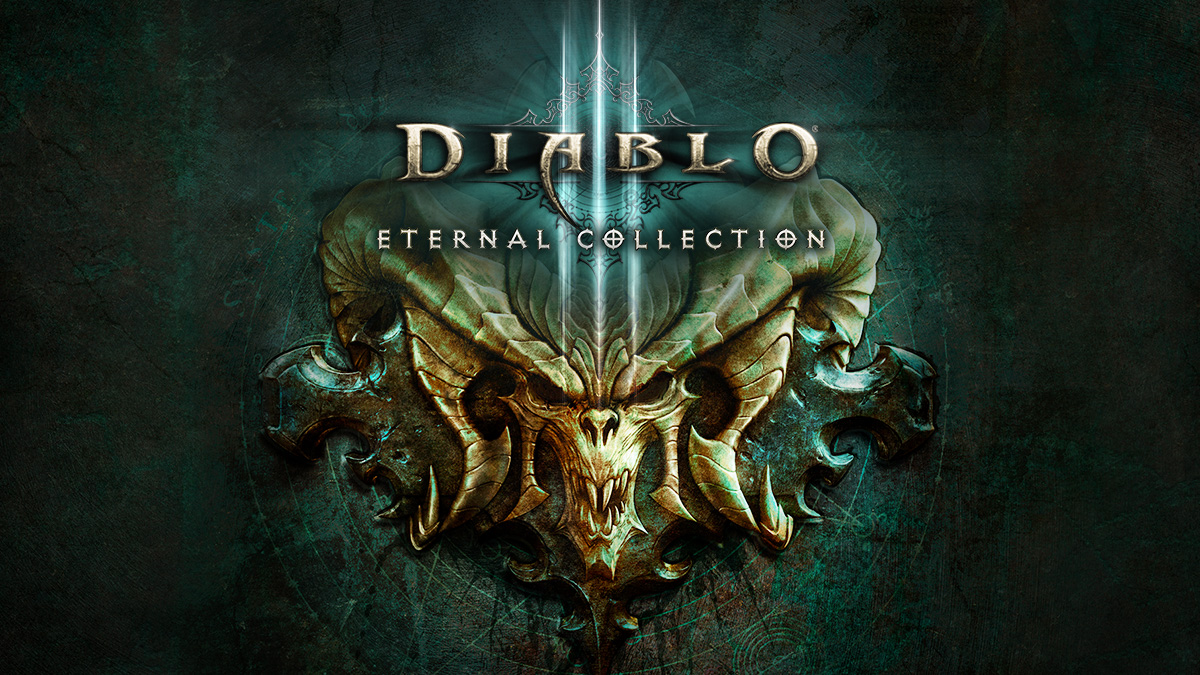
Blizzard’s third entry in the beloved Diablo series drastically changed many things when it was released. It attempted to bring an unabashed PC-centric action RPG into the modern era, bridging things fans loved in the original two games while introducing new things newcomers could enjoy. The game had a rocky launch and had some questionable decisions, however several years of patches, changes, and improvements have evolved the game into a very difference experience with its new content and re-releases. The game is even portable now on the Nintendo Switch! Is the game finally worth your attention? Should hardcore Diablo fans still turn up their nose at this sequel? Read on to find out how I, a longtime Diablo fan myself, feel about the game and its current state.
Diablo III
Publisher: Activision Blizzard
Developer: Blizzard Entertainment
Platform: Windows PC, Mac, Nintendo Switch (Reviewed), PlayStation 3, PlayStation 4, Xbox 360, Xbox One
Release Date: November 2nd, 2018
Players: 1
Price: $59.99
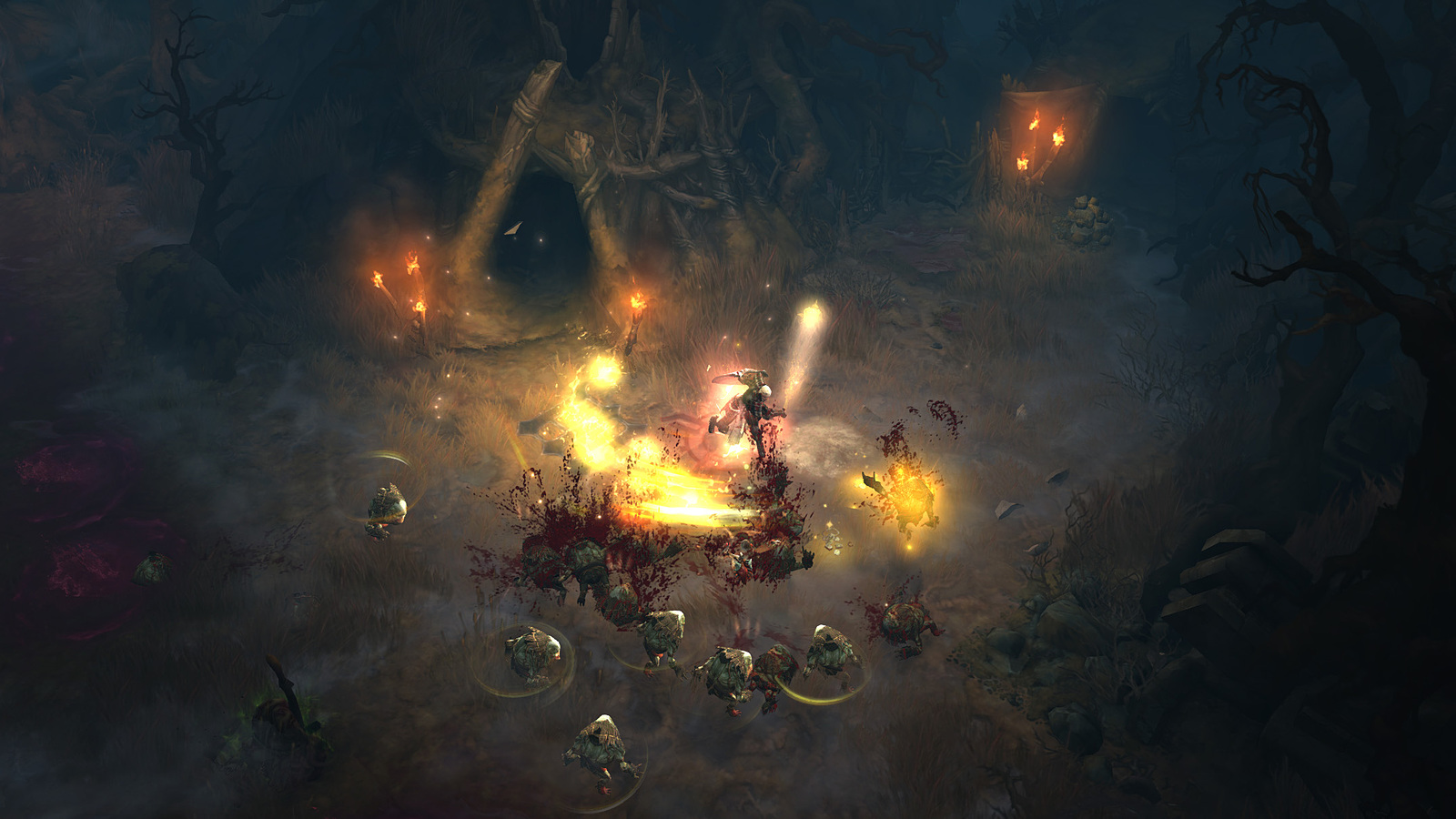
This is my third time playing through the game after its Windows PC debut and later with its launch for PlayStation 4. For the purposes of this review, I’ll be laying out my thoughts for the game across these platforms, as well as my experiences with the original two games and how it compares.
Diablo III made the jump to 3D visuals, while its forebears had pre-rendered assets. The threequel tries to straddle the line between honoring its very dark and disturbing predecessors, as well as adapt its visuals and themes for a fully 3D world. Honestly, as someone that is very keen on games having excellent atmosphere, I feel overall satisfied with its presentation.
If you’re a hardcore fan of the original two Diablo games, you’ll find the third entry largely follows much of the same regions and environments. The first act goes down in the Tristram area, with your first town literally named New Tristram. The mix of outdoor environments and dungeons really make you feel right at home. It’s not quite the same old Tristram vibe, but it’s very close.
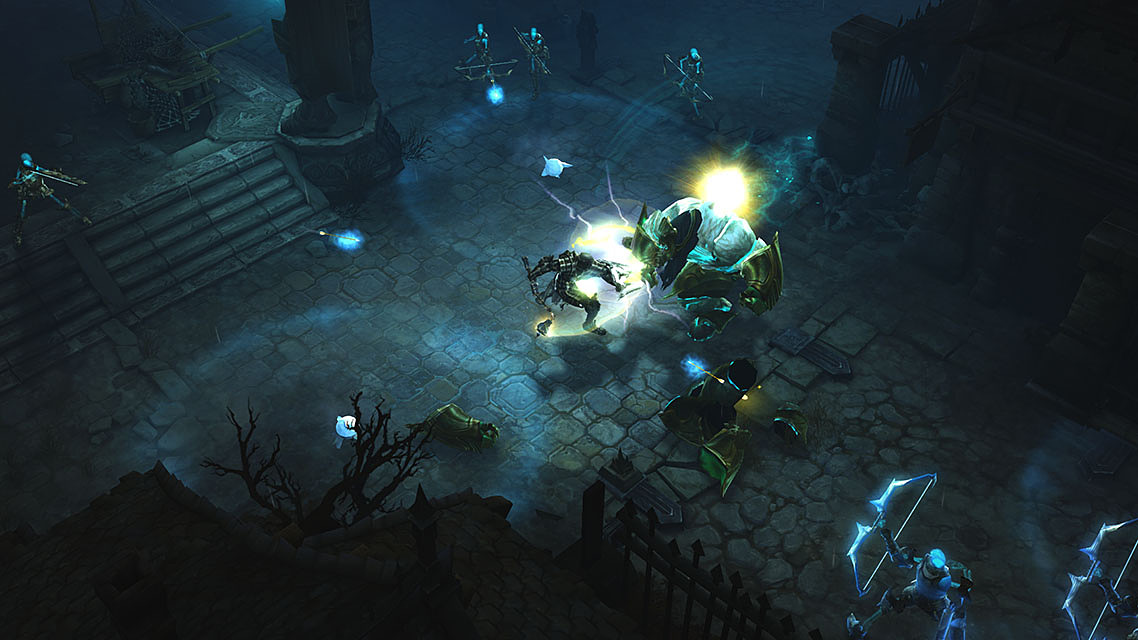
From there you progress to a desert area, ancient tombs, and eventually the high heavens themselves. I think overall the game’s aesthetic is fantastic until the heavens because they’re obviously bright and holy, which is something you wouldn’t expect in a Diablo game. Performance is solid, framerate is locked, and overall I feel pretty satisfied with how the game runs. I’m still waiting on an offline mode for PC, however.
Character models, animations, environments, monsters, spell effects and blood splashes, everything looks quite fantastic and definitely has that look and feel you’d expect in a Diablo game. I will say that later areas tend to get a bit too colorful, but the best atmosphere and visuals come in the expansion – Reaper of Souls. The game runs perfectly on the Switch, as well!
Diablo III changes up character progression and skills in a massive way. While the previous games had you level up in the orthodox RPG way by putting points into various traits and active skills or abilities to literally build your character, the threequel mostly throws that all away.
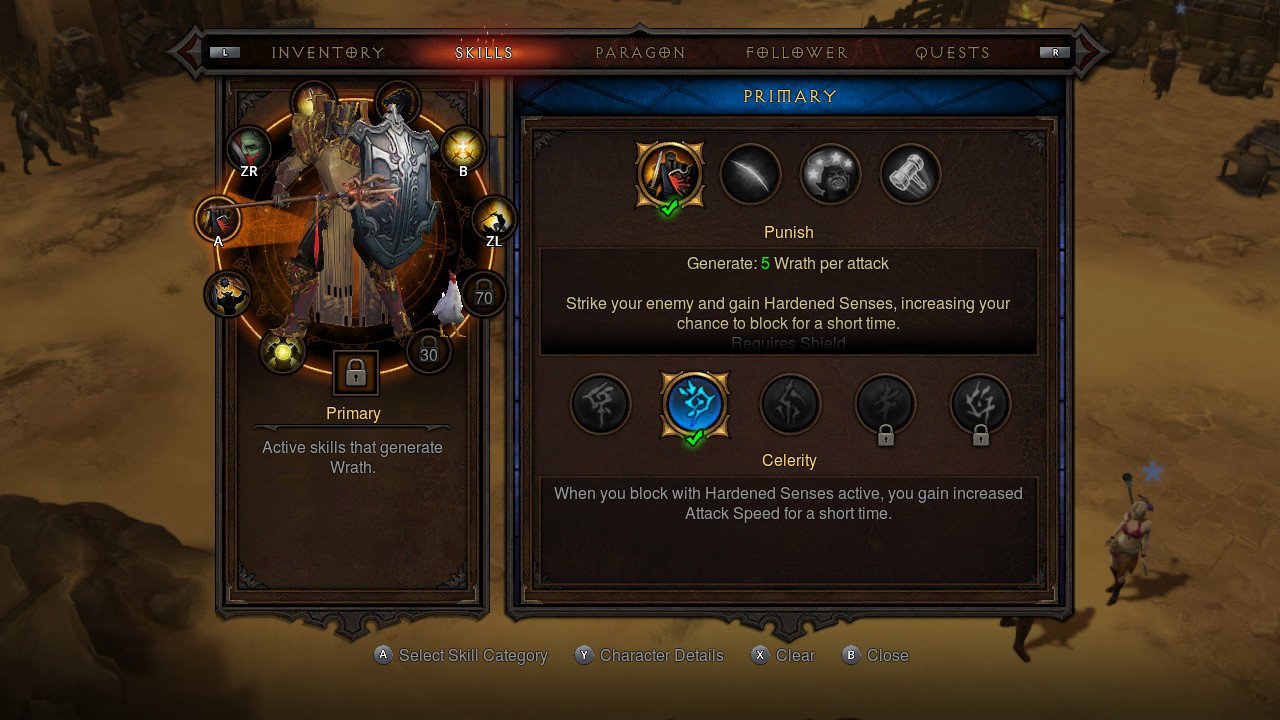
Instead, you’ll be unlocking various active abilities with your level progression, each providing a wide variety of effects, damage, and so on. In total you can toggle skills for your six active skill slots and your four passive skill slots. There’s no real permanence, you can mix and match endlessly.
At first I was a bit let down by this system, however, it works really well and it encourages lots of experimentation. I will say, however, that it will never stop being weird that default weapon attacks are basically gone – instead your main weapon attack is replaced by a skill.
Default attacks being skills, which you can swap, is okay if the skills would still be true to the weapons, when we know this isn’t the case. Some of these attack skills are totally separate from your weapon. Despite this, weapon damage and attributes are huge, and will affect your overall build.
Veteran players, like myself, may be thrown off by how simplified character progression is. I will admit that I miss being able to properly min/max, and that perhaps the mechanics are a bit too simplified. They straddle the line between both, and it definitely still gives a fun experience.
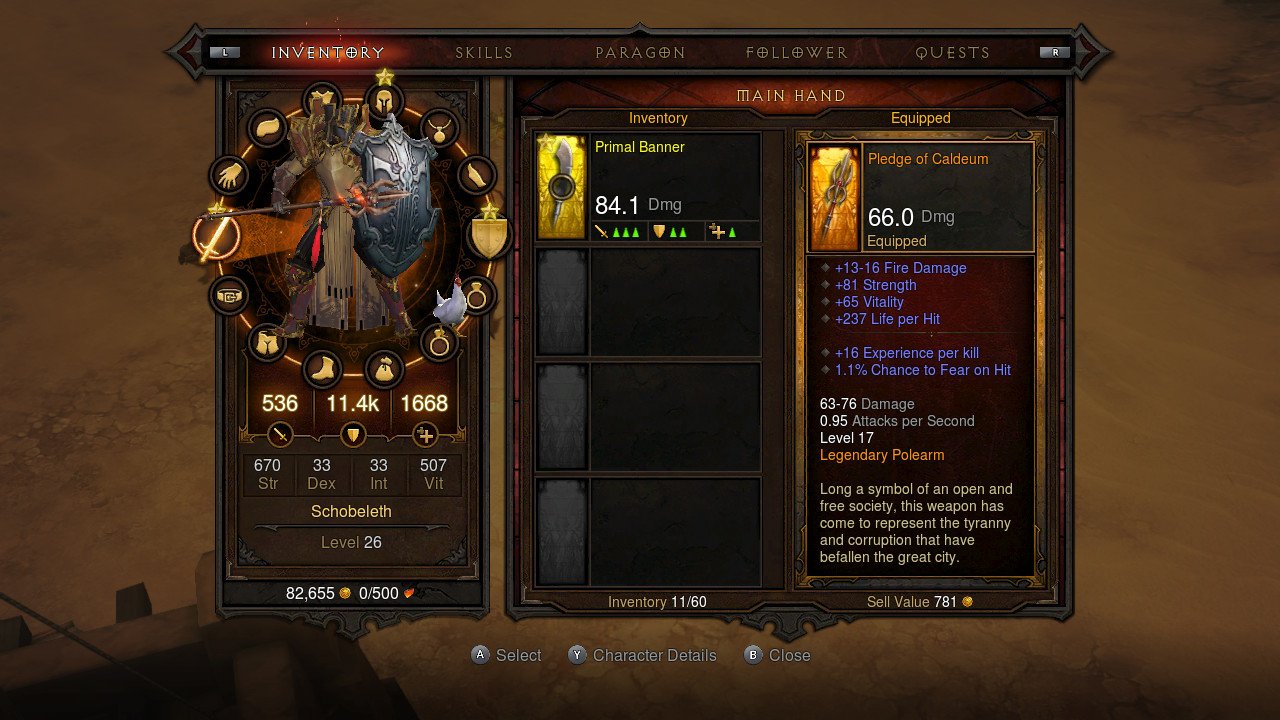
The radial menu works excellently for the console versions, even the Switch with its smaller Joy-Cons and screen. This also applies to the skill radial menu, all of it works very smoothly and is totally welcoming. Mouse and keyboard will always be best, but the controller adaptation is great too.
The original version of the game is largely gone, most especially its controversial auction house. I think Blizzard has mostly updated and patched the game into what it should have been in the first place. I’d say they sort of went overboard with loot, as players originally felt there wasn’t enough.
As you progress you’ll find loot pretty frequently, but it gets a little silly with how frequently you can get legendary items, or even rare items. I suppose this ties into the longevity of the game, where you’ll eventually have big stats and dish out huge numbers in damage.
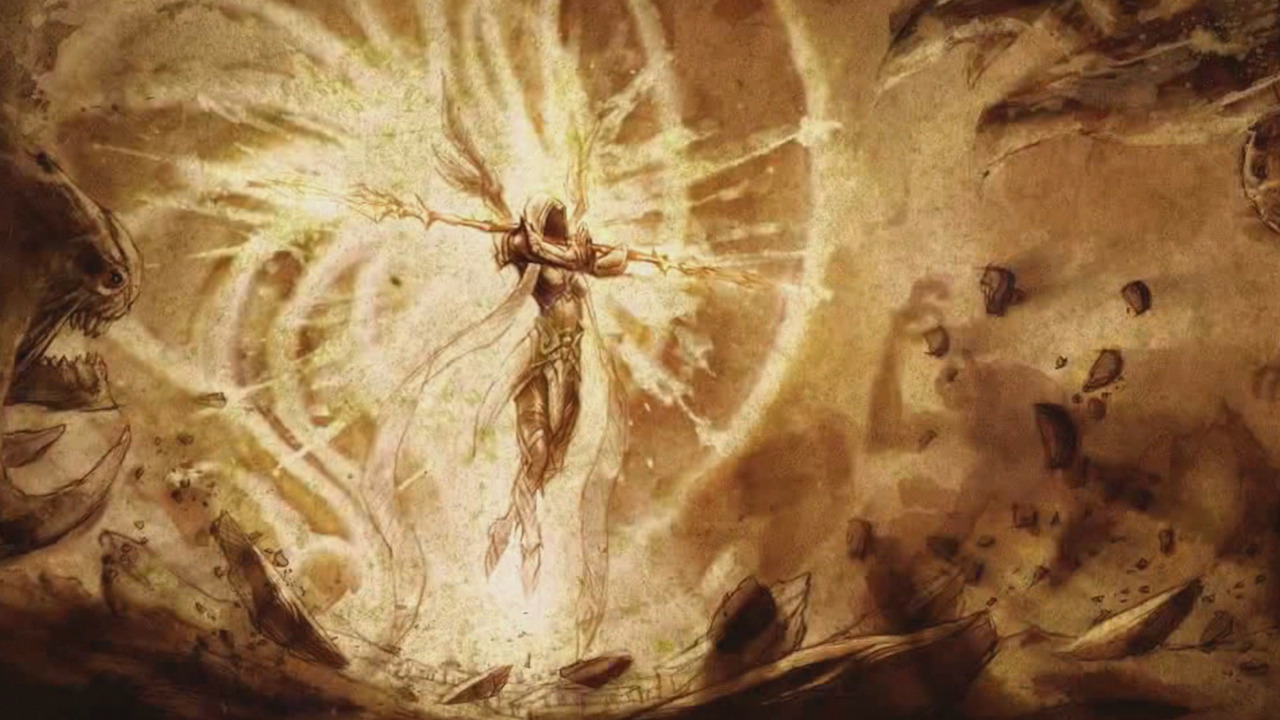
As mentioned above, the Switch version runs flawlessly and lets you continue the local or online loot grind. Local play with the two Joy-Cons is great, but it gets a bit tedious when you’re trying to explain to your aging father how to equip items by clicking the analog stick and pressing a face button.
Just like previous games, the story in Diablo III focuses on an eminent apocalypse brought on by – you guessed it, demons. The Lesser Evils known as Belial (the Lord of Lies) and Azmodan (the Lord of Sin) have entered Sanctuary, and begin their quest to continue the war against the High Heavens. I won’t spoil much, but that’s basically the gist of the story. The game is a direct sequel, and it continues the story players have known from before.
The change in focus with this sequel when compared to its predecessors is noticeable, when comparing just how dark the games feel. The first two Diablo games legitimately felt like you were thrust into a terrifyingly evil world, a time when all hope seems lost and you’re fighting in a genuinely dark world. Diablo III is still dark, but it focuses more on a grand story. You could say this sequel loses that feeling of miserable emptiness.
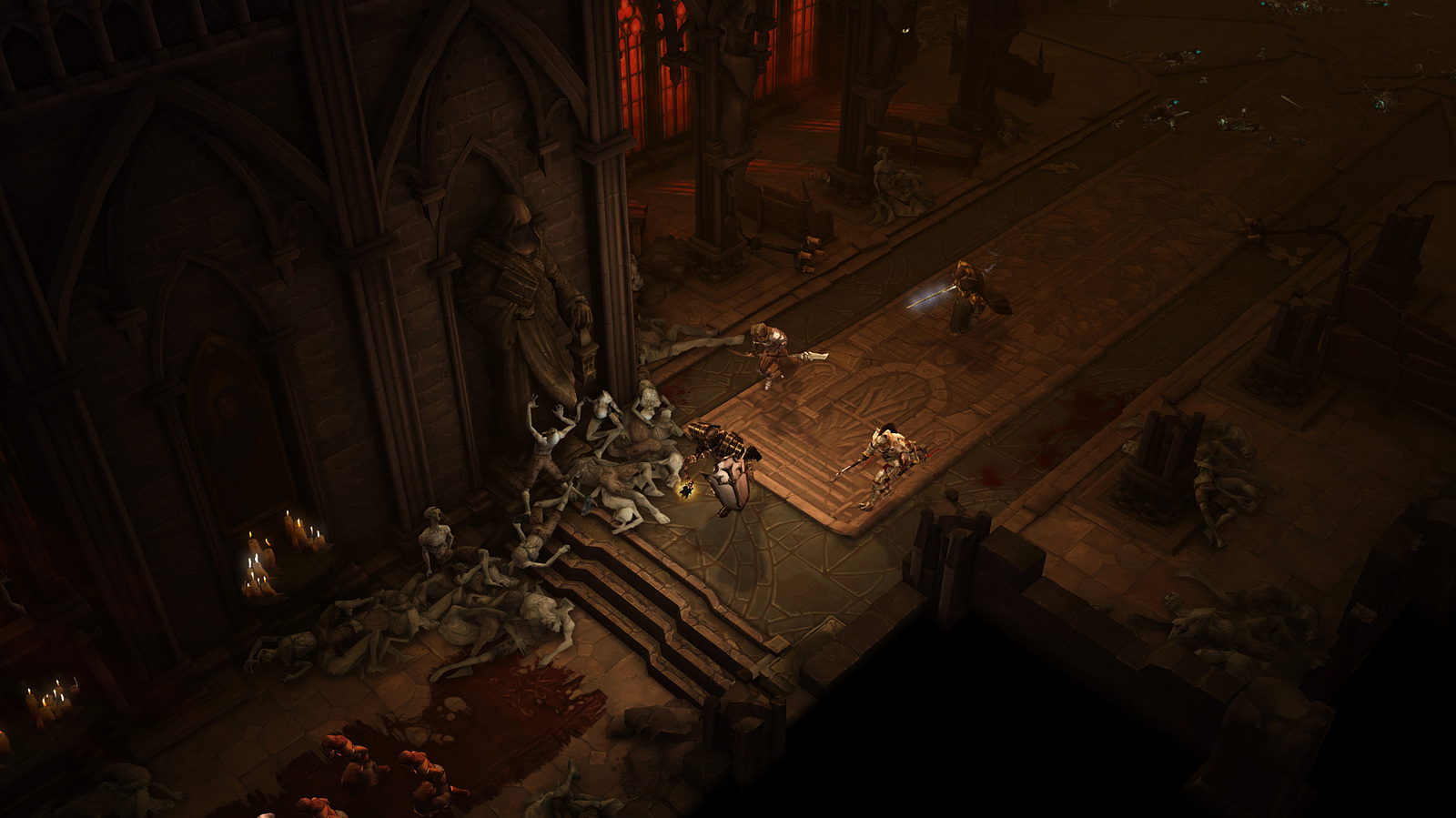
It’s hard to describe but fans who truly loved the first two games will know what I’m talking about. The original Diablo games, both made by the same team, really captured a despicably evil world.
You’d find tomes recanting tales of disgusting acts, or you’d simply feel like you were in a nasty, dark, and downright evil place – and there were many. I think this was somewhat lost, as Diablo III was made by a different team.
Perhaps the change up with more central figures, like a certain archangel and Deckard Cain’s pupil Leah, sort of removed that sense of mystery and danger. In the first two games you feel like an adventurer poking around in the dark, only to get swept up into a feud between angels and demons.
The third game feels more like a grander story with bigger characters. This isn’t necessarily a bad thing, but it loses some of that eerie darkness. The story overall kind of felt like a bit of a letdown when compared to what players experienced in the originals. It’s serviceable, but lacks that iconic tone.
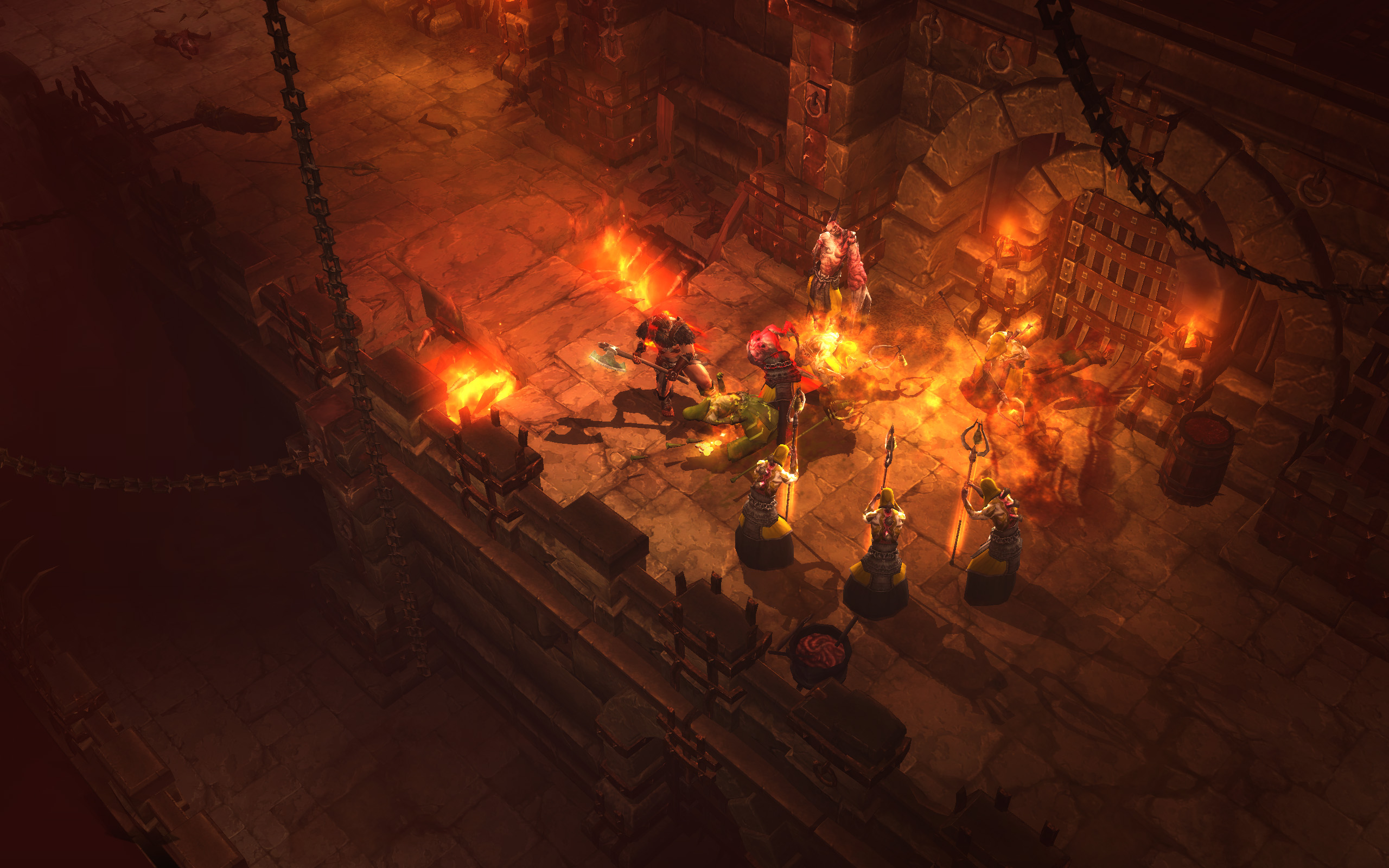
The soundtrack Matt Uelmen crafted for the first Diablo games is the Diablo franchise, incarnate. I adore his soundtracks so much I listen to them regularly and consider them a critical part of the Diablo experience, so naturally I was upset to learn Warcraft composers were hired instead.
All three composers managed to make a soundtrack that definitely sounds reminiscent of Diablo, however it sort of matches the same change up in story and themes. Matt’s soundtrack is eerie, dark, atmospheric, and decidedly evil. This new soundtrack is still dark, but focuses on grandiose tones.
If anything, the music is meant to be more tailored as background ambience than anything, with less experimentation. I feel like Blizzard simply told Matt to make something dark and evil sounding before letting him go to town, while this sequel had much more focus and direction in its sound.
I definitely like the soundtrack in the threequel, but I’m not sure it can ever compare to the original tunes. These are two eras of Diablo, both with very different focuses on scale and overall themes, so it makes sense that Blizzard also shifted the tone in the music for Diablo III.
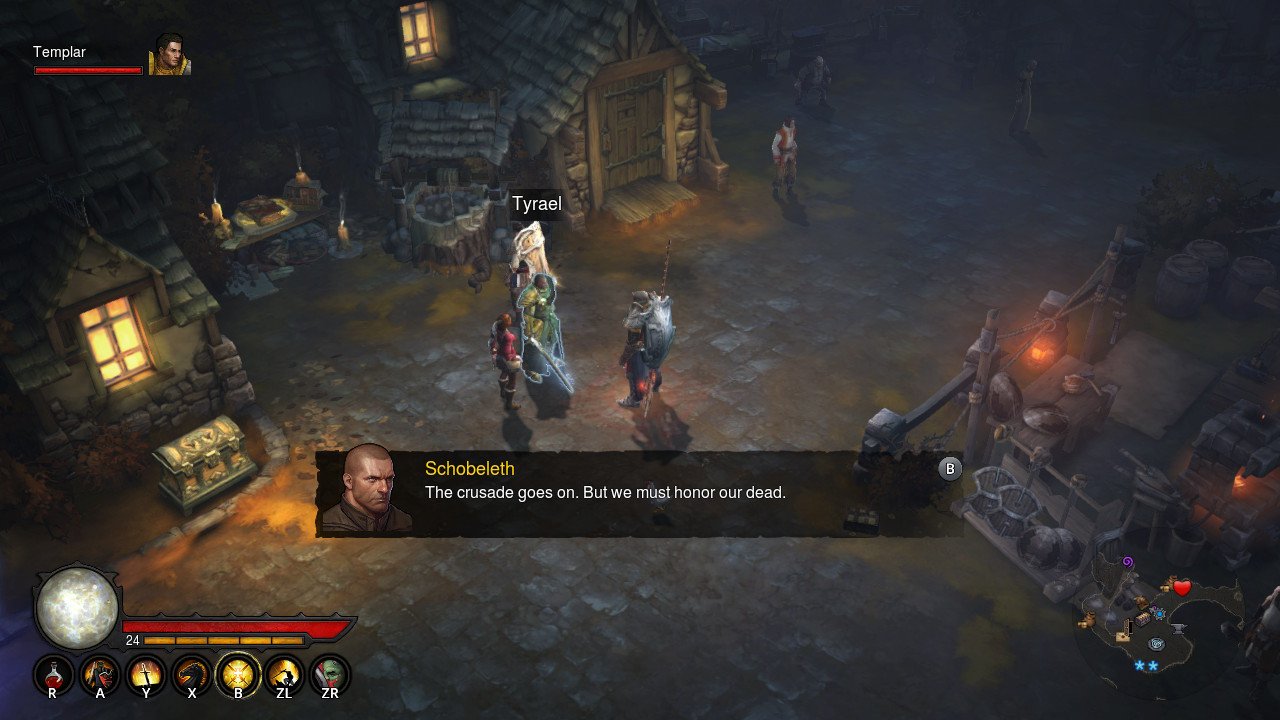
Overall, Blizzard had a tumultuous journey with trying to adapt Diablo for the modern era, and while they made some questionable decisions, the game has been updated and patched into something great and enjoyable. Again, this is my third time, now on the Switch, and I’m still not bored.
I don’t think it’s really possible to completely recapture the magic of the original two Diablo games. They are relics of a bygone era and much of that team is no longer at Blizzard. Diablo III, however, is a very enjoyable modern continuation of the franchise, and it just works very well.
There’s a lot of content here, the core formula, albeit changed, mostly works very well on both PC and on a multitude of gaming consoles. Old school fans like myself can enjoy it, if you can get over the mechanics being simplified. The sequel is even moreso focused on the loot you can acquire.
Diablo III is an unabashed loot-fest of an action RPG that has successfully bridged the gap between a strictly mouse+keyboard experience and those of us who prefer a controller. The game has quite a lot of content, is now fully portable, and keeps me coming back for more.
Diablo III was reviewed on Nintendo Switch using a review copy acquired by Niche Gamer. You can find additional information about Niche Gamer’s reviews/ethics policy here.
The Verdict: 9
The Good:
- The core Diablo experience, adapted for a modern era
- Lots of loot to collect, even moreso than before
- 3D visuals that look great but still capture that Diablo feel
- Character progression is changed massively, encouraging experimentation
The Bad:
- Music lacks the experimentation and feel of the classics
- Story is a bit disjointed and stale when compared to its precursors
- Holdout veteran players may resent the character progression changes
- Weapon attacks are replaced by skills. I will forever find this dumb.
- Still no offline mode for PC.